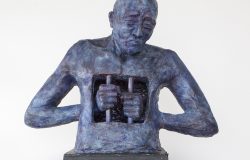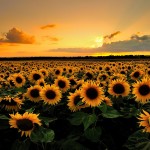Back when I was a high school English teacher there were some stock standard pieces of literature that consistently made it onto the curriculum. Shakespeare always had a spot, Dickens was a regular and not a year seemed to go by without having to teach John Keats’ Ode to a Grecian Urn.
When students love the arts – and literature specifically, that’s them converted for life. Their ear is attuned, and their sensibilities respond to the scansion of poems and the magical spells great writers cast. However, a young adult who has no interest in English literature can remain unmoved by the point of poetry and great writing. Teaching this group of people the poetry of Keats is like trying to sell a mortgage to a gypsy. It always concerned me that these people missed out on this secret source of treasures available to us in life.
The Ode to a Grecian Urn commemorates the beauty of moments frozen eternally into images captured on the surface of an urn. The embossed leafy tree is endlessly captured in Spring; the piper’s tune is always about to begin its melody; the lovers are forever transfixed in that moment before a kiss. The whole poem is a mediation on what is beautiful in life and what is eternal.
When a spider weaves its web does it have a sense that it must make something beautiful with its silken thread? Perhaps this is a human inference onto something innate within the spider’s temperament. Is the beauty imposed on the web by our perception or is a spider’s web engineered to be beautiful by the spider?
There is a consciousness that exists in any living thing – when a sunflower obeys the laws of heliotropism and its blossomed head follows the sun like an obedient disciple or an oyster, agitated by a grain of sand, creates a pearl, isn’t this a consciousness to life that is unknowingly (or perhaps knowingly) casting forth beauty.
I think beauty happens whenever creation occurs.
And how about the peacock? A symbol of kindheartedness and glory which is identified with the Greek Goddess, Hera. Mythology tells us Hera created the Peacock from Argus whose hundred eyes, seen on the tail feathers of the Peacock, symbolize the vault of heaven and the ‘eyes’ of the stars. Is this creature aware of his beauty as his decorative tail spreads out bejeweled with the ‘eyes of heaven’?
As our ancestors lit fire torches in caves and embellished their walls with scenes of hunting and paid ritual homage to the bison and beasts that fed their communities were these artists consciously painting a representation that was meant to be beautiful? It seems to me that there is something in us that evokes beauty in the act of creation. And we cant help ourselves but create. To be alive is to create. The little child that decorates their doll house with curtains or puts flowers in the garden of the picture they have created – is this conscious or unconscious beautification?
I see beauty in simple human experiences. There are times when, hot and bothered, my teenage daughter will pull at her long hair and scroll it up into a bun vaguely taming it into a mound on top of her head, tendrils escaping and she is unconscious to how beautiful she looks. My son can practice and practice the kicking of a soccer ball into a net until his body aligns with the force of his muscles and the position of the ball and the goal is scored – its like poetry made physical.
The mystery of life and our confounded attempts to make meaning from our experiences are in fact an ongoing, beautiful, creative expression. If each of us is just a thought in the consciousness of the world surely each one of us – no matter the form we take – is an expression of beauty.
There is an exquisite rapture to be gained from the experience of life. It’s in the glossy pearl, the emblazoned sunflower, the Grecian Urn, the messy bun, the perfect goal, the dazzling peacock and the delicate spider’s web.
Beauty is everywhere.
Maybe it is the observer of life who connotes beauty upon a person, an object and a moment. Our days can drift past us, we oblivious to the boundless beauty that is everywhere. I think we could do with being better observers of our own lives and seeing how our simple, habitual ways of being in the world are beautiful beyond compare.
‘Beauty is truth, truth beauty,’—that is all
Ye know on earth, and all ye need to know.”







Stunning piece again. Please keep sharing your beauty in words with us all.
Thank you